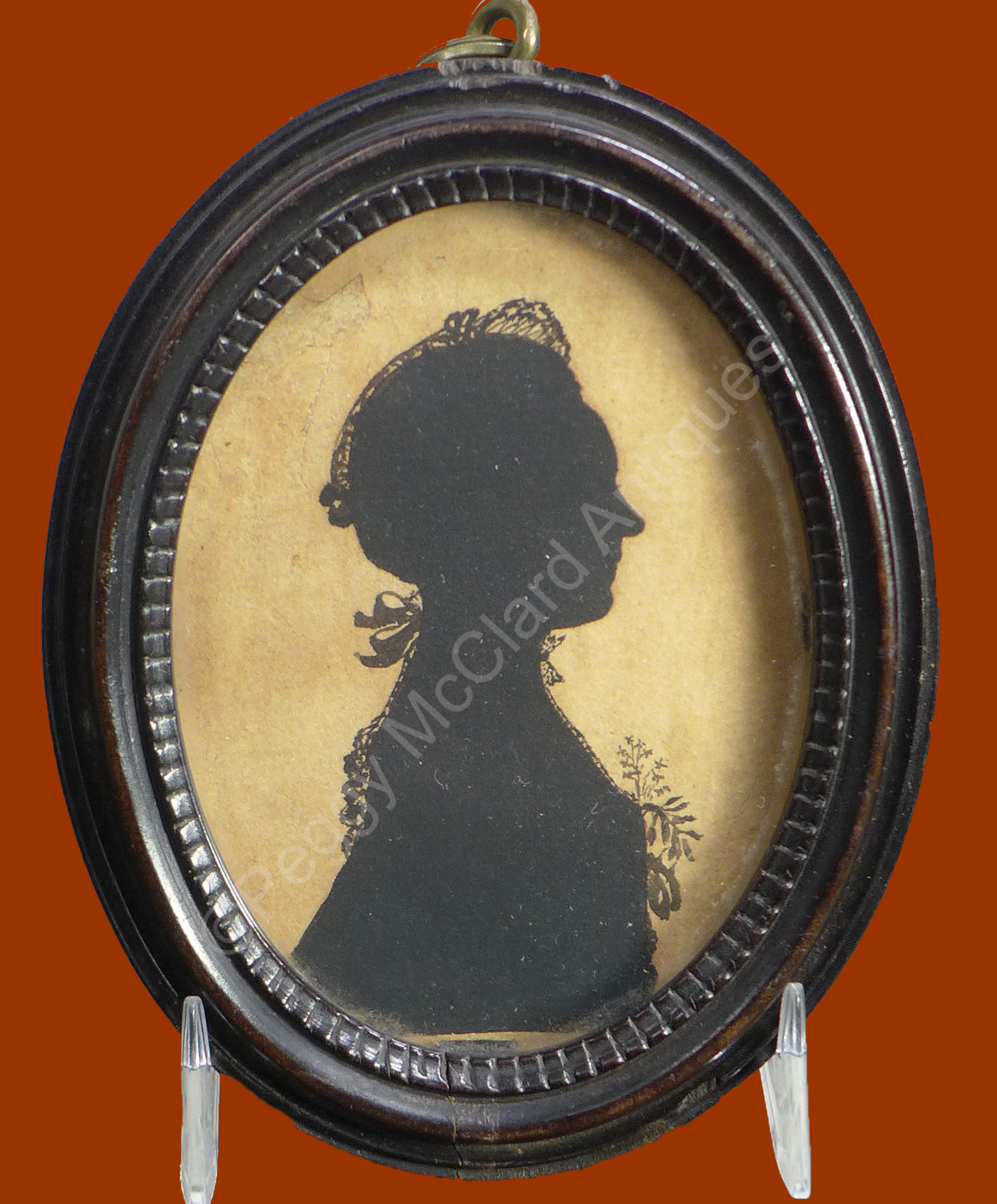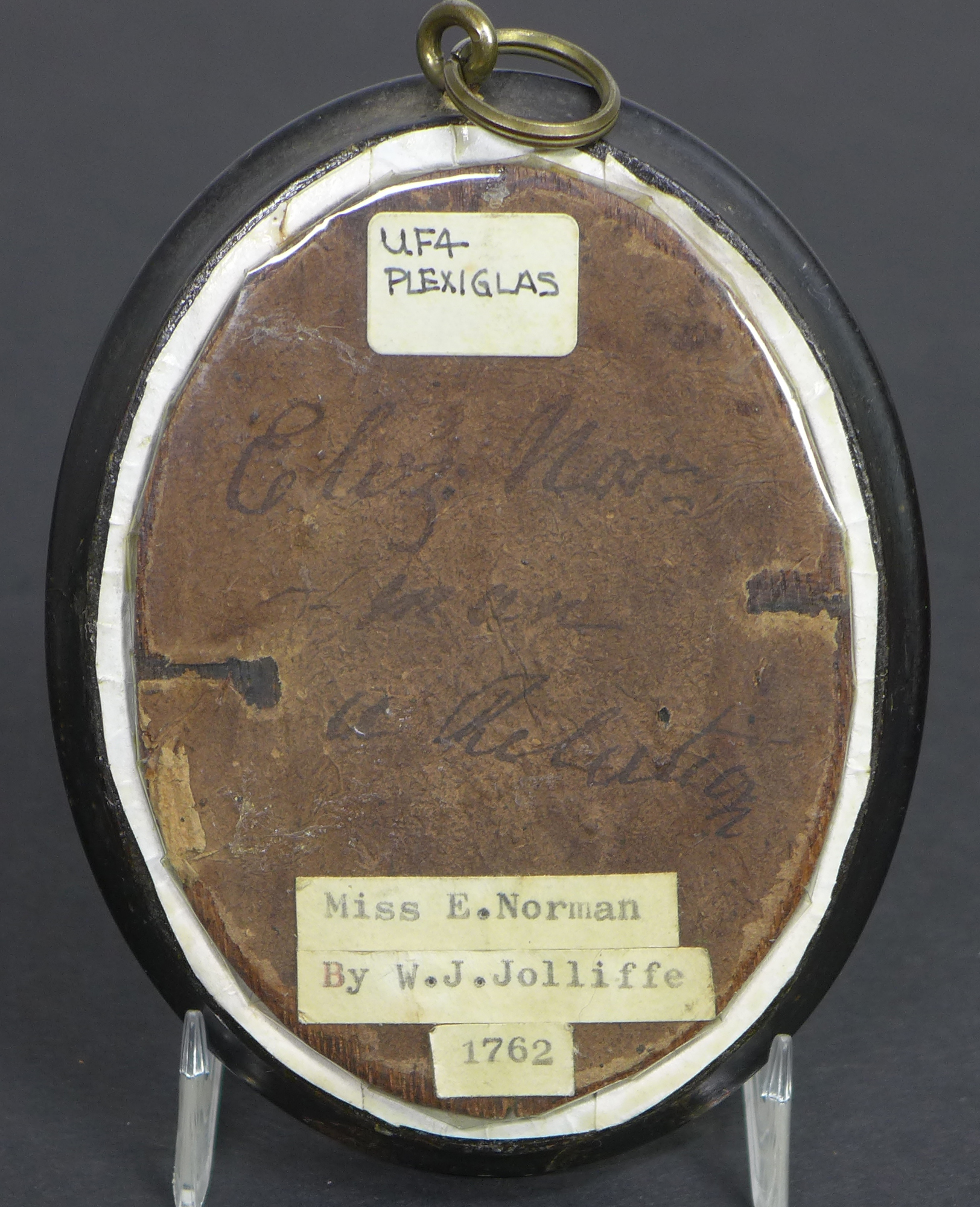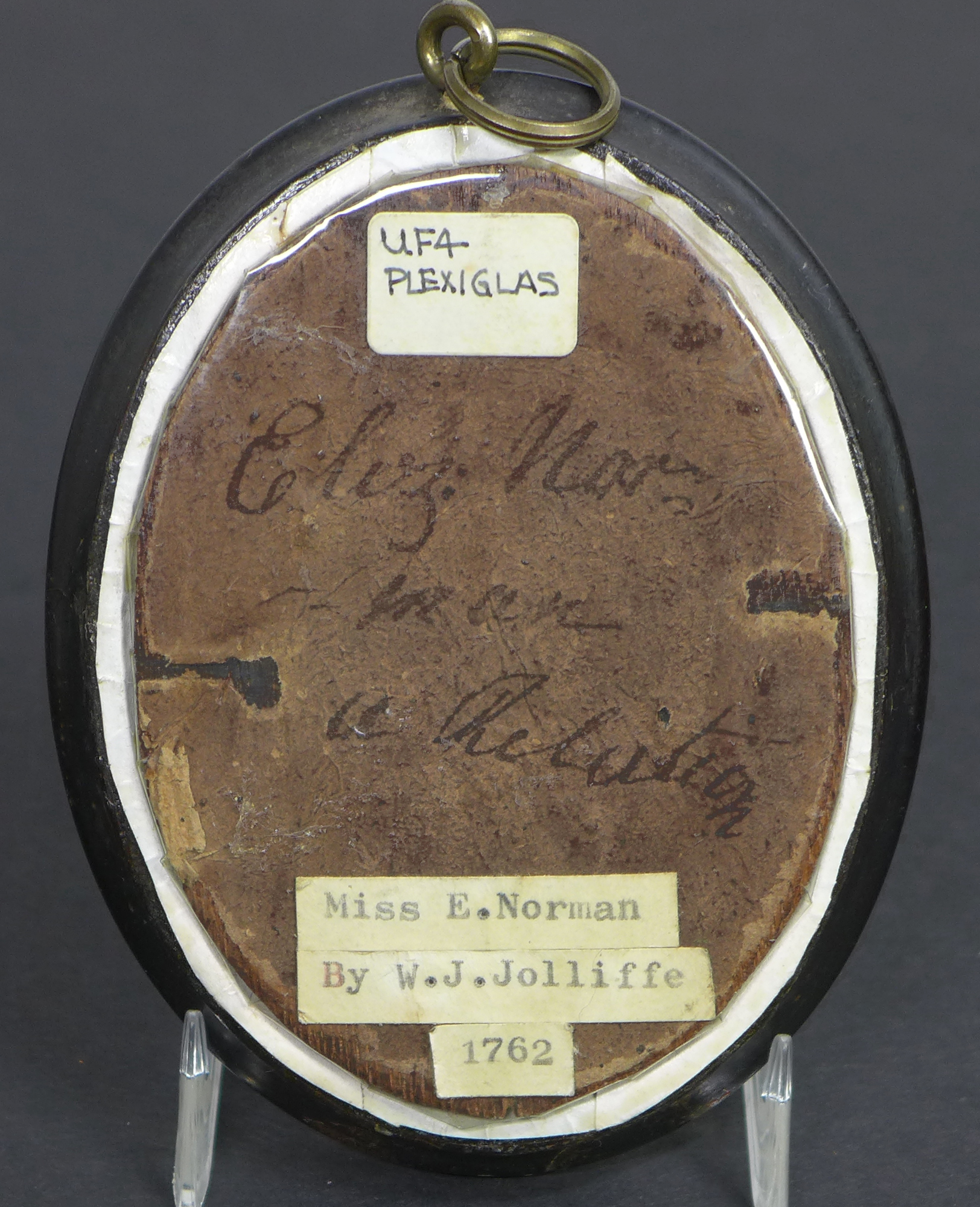
William John Jolliffe (circa 1738-d. 1798) appears to have been one of the earliest commercial silhouettists. Today his work is quite rare even though Sue McKechnie tells us that by 1758 he had almost certainly cut at least 800 profiles. He was the son of a book-seller which did not seem to be very profitable because both father and mother paid poor rate of taxes. Jolliffe’s father died in 1755 and there are no records to indicate that he took over his father’s business after that death. Jolliffe cut silhouettes from paper that he had blackened with India ink, painted profiles on paper and reverse-painted them on glass (to which he added detail by scratching away the black paint).
Jolliffe certainly captured the admiration of the gentlemen members of White’s, all of whom sat for their profiles. In 1758 Rev. William Mason penned the following poem in 1758 which he sent to his friend, poet Thomas Gray. The poem titled 'An Ode to Mr. Jolliffe who cuts out likenesses from the Shadow at White's'. (White's is the famous club in St James's Street, London, founded in 1693 by Francesco Bianco).
Oh, thou that on the walls of White's
The temple of virtu,
Of dukes and earls, and lords and knights,
Portrayest the features true!
Hail, founder of the British school!
No aids from science gleaning.
Let Reynolds blush, ideal fool,
Who gives his pictures meaning.
Of taste and manners let him dream,
With all his art and care,
He can but show us what men seem,
You show us what they are.
Let connoisseurs of colouring talk,
What is't at best but skin:
You, Jolliffe, at one master-stroke,
Display the void within.
In his reply Gray wrote, 'I am extremely pleased with your fashionable ode.' He offered a few criticisms and inquired who Jolliffe was. 'Lord,' replied Mason, 'you are not one of us; you know nothing of life. Why, Mr. Jolliffe is a bookseller's son in St. James' Street, who takes profiles with a candle better than anybody. All White's have sat to him, including Prince Edward.” McKechnie at 244-45.
This delightful fully painted of Elizabeth Norman shows Jolliffe’s painting skills very nicely. McKechnie was enchanted enough to keep Ms. Norman in her personal collection and to use the image to illustrate her book and discuss the profile which is so important to dating very early silhouettes according to clothing styles. McKechnie at 126. McKechnie wrote that the silhouette was the earliest known surviving silhouette by Jolliffe and that it is signed and dated 1762 below the bust. See McKechnie at 420. Unfortunately, the original frame covers area where McKechnie describes the signature to be and because of the conservation mounting, I have been very reluctant to dismantle the framing to inspect the paper below. There is, however, paper on the reverse of the frame is inscribed “Eliz. Nor___” and bears what may be a signature and date.
Ms. Norman wears a Pulteney cap which is described as a round-eared cap that was wired to stand out above the ears in 2 half-moons. She also wears a small nosegay of flowers at the neckline of her dress which may indicate that she also wore a “bosom-bottle” which was a small vase which kept the flowers fresh while worn. The detail painted at the back of her dress suggests that Ms. Norman is also wearing a sack dress and a handkerchief. A ribbon necklace is tied at her neck. These details are what makes this early silhouette so important and beautiful! The provenance of Sue McKechnie’s and Paula Peyraud’s collections make it even more exciting.
Paula Fentress Peyraud (1947-2008) was an avid collector from an early age. She was a reference librarian at the Chappaqua Public Library and her voracious love of reading prompted her to amass an important collection of books, manuscripts, autograph letters of 18th through the 20th century. As a lover of art and people, she also put together an important collection of paintings, silhouettes, drawings and prints. Luckily, this avid collector lived in her family’s substantial house which she filled with her collections—even to the point where she added on to the house for more room to collect. The works of art she collected were of high quality, from the best collections and mostly portraits. She obviously loved characters and the idea of collecting people. Her collection of silhouettes included the best-known artists as well as some folk pieces.
#5849 Sold
Provenance: Paula Peyraud Collection, Sotheby Park Bernet & Co., The McKechnie Collection of Silhouettes, lot 130, July 30, 1979; Sue McKechnie Collection. Published: McKechnie, Sue, British Silhouette Artists and their Work 1760-1860, Sotheby Parke Bernet, London, 1978. 126, illus. 159. Discussed at 247, 420.


